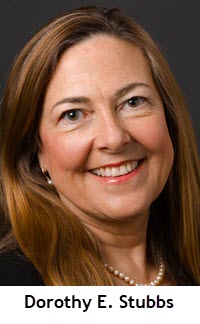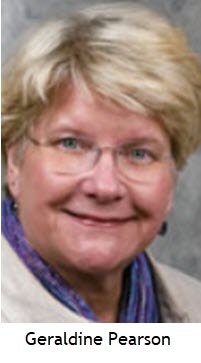Abstract
Excerpted from: W. John Thomas, Dorothy E. Stubbe and Geraldine Pearson, Race, Juvenile Justice, and Mental Health: New Dimensions in Measuring Pervasive Bias, 89 Journal of Criminal Law and Criminology 615 (Winter 1999) (89 Footnotes) (Full Document)
 Delinquent Children, are those, who through Ignorance, Vice, Folly, Sport Carelessness, Thoughtlessness and in a hundred other ways, violate City Ordinances, Laws, statutes or the Rights of Others, for which there must be some method of Correction.
Delinquent Children, are those, who through Ignorance, Vice, Folly, Sport Carelessness, Thoughtlessness and in a hundred other ways, violate City Ordinances, Laws, statutes or the Rights of Others, for which there must be some method of Correction.
Defective Children, are those who are physically or mentally deficient, thereby becoming a charge upon the State, and therefore need the Protective Care of The State or Community in their misfortune; whether these physical or mental Defects are due to Heredity or otherwise, the best method of handling them is through the Juvenile Court, or one similar to it, after which they may be sent to the proper Institution, where the best care for the individual case may be given.
 Almost from the moment of its inception in 1899, the juvenile court has witnessed criticism of its handling of youths suffering from mental illness. Dr. William MacDonald made the point in a 1912 critique of the Connecticut juvenile justice system: “We should have a law creating a Juvenile Psychopathic Institute for Juvenile Offenders, Mental Defectives, and etc. Many of these Juvenile Offenders need the services of a good physician more than they do those of the jailor.”
Almost from the moment of its inception in 1899, the juvenile court has witnessed criticism of its handling of youths suffering from mental illness. Dr. William MacDonald made the point in a 1912 critique of the Connecticut juvenile justice system: “We should have a law creating a Juvenile Psychopathic Institute for Juvenile Offenders, Mental Defectives, and etc. Many of these Juvenile Offenders need the services of a good physician more than they do those of the jailor.”
As soon as states had begun to address Dr. MacDonald's concern, criticism turned to the disposition of juvenile criminal offenders between the criminal justice and mental health systems. The research has usually taken one of two forms. Most research has compared samples from the juvenile justice and mental health systems and concluded that race is “the most striking factor distinguishing the two groups.” Other researchers have compared the juvenile criminal justice and mental health population with the racial distribution of the general population and found an “absence of racial bias in admission” to the mental health facilities.
Our study injects two new dimensions into the existing body of knowledge. First, it is the first study to compare only court-referred adolescents in the mental health system with those in the criminal justice system. This methodology offers a more precise measurement than that offered by all of the previous research which compared the full correctional school population with the full psychiatric hospital population. Second, the study is also the first to compare clinically-referred patients with court-referred patients in the juvenile mental health system.
 Our findings indicate that the racial profiles of the court-referred and clinically-referred juveniles in the mental health system are statistically indistinguishable. A comparison with 1990 Connecticut census data reveals that racial minorities are over-represented in both the state-operated facilities of the mental health and the juvenile justice systems. The populations did, however, exhibit different psychiatric profiles. The clinically-referred were more likely to exhibit psychotic disorders while the court-referred were more likely to exhibit overt conduct disorders.
Our findings indicate that the racial profiles of the court-referred and clinically-referred juveniles in the mental health system are statistically indistinguishable. A comparison with 1990 Connecticut census data reveals that racial minorities are over-represented in both the state-operated facilities of the mental health and the juvenile justice systems. The populations did, however, exhibit different psychiatric profiles. The clinically-referred were more likely to exhibit psychotic disorders while the court-referred were more likely to exhibit overt conduct disorders.
Part II of this article places our study's findings in historical and jurisprudential context by outlining the history of juvenile court, chronicling the court's involvement in the placement of adolescents in the criminal justice and mental health systems, and summarizing the courts and processes that figured in the study results.
Part III provides an exposition of the existing body of knowledge on the subject.
Part IV outlines our study's methods and findings and concludes with a detailed comparison of the psychiatric profiles of the clinically-referred and court-referred patients in the mental health system.
Part V closes the article with a discussion of the implications of our findings for the future of the juvenile justice and mental health systems.
[. . .]
De guy wid de whiskers what sat up on the high bench, looked over to the Cop, and de Cop says to him, dis is a very bad kid, and he went into Smith's barber shop and took two razors, and he admits it yer honor; and what does de guy do, but hikes me right off to Golden before I had a chance to say a word.
Our findings have broad implications for any discourse regarding the juvenile criminal justice and mental health systems. Certainly the Progressives who championed the “best interests of the adolescent” should not be pleased with findings that indicate that race may be a significant factor in both court and clinical dispositions. Legal Moralists and other critics of illicit state assertion of control over adolescents might well wish to broaden their survey to include the mental health system. And, the Constitutionalists who once critiqued the criminal justice system as procedurally bankrupt might wish to reconvene to consider the substantive legitimacy of the activities of both the courts and clinicians.
Some aspects of our findings may please all of these parties. That the mental health system is more likely than the criminal justice system to be populated with adolescents suffering “severe or acute mental illness” should provide some solace to the critics, regardless of perspective. The racial findings, on the other hand, may suggest that, like the 1930s English judge described in the child's quote that opened this conclusion, both modern-day juvenile court judges and mental health clinicians may not be effectively listening to or attending to the needs of the adolescents which they serve.
Professor of Law and Director of the Center for the Study of Health Law and Policy, Quinnipiac College School of Law; Instructor, Yale School of Medicine, Department of Epidemiology and Public Health. .
Assistant Professor and Director of Residency Training, Yale Child Study Center; M.D., 1985, University of Arizona.
Clinical Nurse Specialist, Riverview Hospital; R.N., University of Connecticut.


